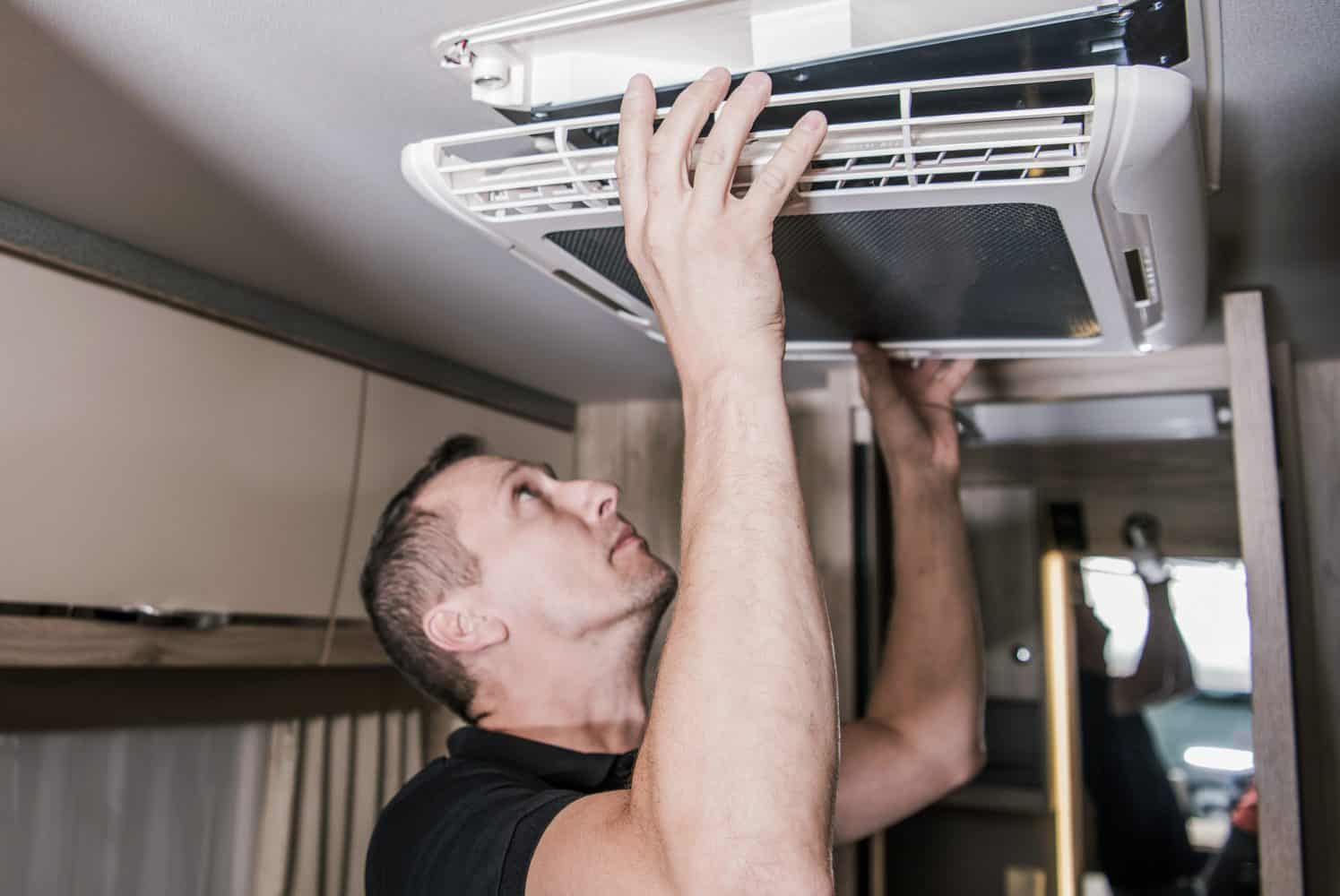Recreational vehicles, or RVs, provide a unique opportunity to explore the great outdoors while still enjoying the comfort and convenience of home. However, when the weather turns hot, it can be frustrating to find that your RV air conditioner is not blowing cold air. There are several reasons why this may be happening, and in this article, we will explore the potential causes and solutions to this common problem.
1. Dirty Air Filter
A dirty air filter is one of the most common causes of an RV air conditioner not blowing cold air. The air filter is responsible for removing dust, dirt, and other debris from the air before it enters the air conditioning unit. Over time, the filter can become clogged, preventing air from flowing through the unit. When this happens, the air conditioner may not be able to produce cold air.
To solve this problem, you will need to clean or replace the air filter. First, locate the air filter on your RV air conditioner. It is usually located on the intake side of the unit. Once you have found it, remove the filter and check for dirt and debris. If the filter is dirty, use a vacuum cleaner or a soft brush to remove the debris. If the filter is damaged or torn, you will need to replace it with a new one.
Take a look at our article on: 6 Best Portable Air Conditioner For Camper Trailers
2. Low Refrigerant Levels
Another reason why an RV air conditioner may not be blowing cold air is low refrigerant levels. Refrigerant is a substance that cools the air inside the air conditioning unit. If the refrigerant levels are low, the air conditioner will not be able to produce cold air.
To solve this problem, you will need to add more refrigerant to the air conditioning unit. However, it is important to note that adding refrigerant is not a DIY job. Refrigerant is a toxic substance that can cause serious health problems if not handled correctly. You should contact a professional HVAC technician to add more refrigerant to your RV air conditioner.
3. Faulty Compressor
The compressor is the heart of the air conditioning system. It is responsible for compressing the refrigerant and pumping it through the system. If the compressor is faulty, it will not be able to compress the refrigerant properly, and the air conditioner will not be able to produce cold air.
To determine if the compressor is faulty, you will need to check the electrical connections and the motor windings. You should also check the pressure of the refrigerant. If the electrical connections and motor windings are good, but the refrigerant pressure is low, it could indicate a faulty compressor.
If you suspect that the compressor is faulty, you will need to contact a professional HVAC technician to diagnose and repair the problem. The compressor is a complex component of the air conditioning system, and it is not a DIY job.
You may enjoy our article on: Best RV Rooftop Air Conditioners
4. Dirty Condenser Coils
The condenser coils are responsible for removing heat from the refrigerant as it flows through the air conditioning system. If the condenser coils are dirty, they will not be able to remove heat from the refrigerant properly, and the air conditioner will not be able to produce cold air.
To solve this problem, you will need to clean the condenser coils. First, turn off the power to the air conditioning unit. Then, locate the condenser coils. They are usually located on the exterior of the RV, near the compressor unit. Once you have found the coils, use a soft brush or a garden hose to remove any dirt or debris that may be stuck to them.
5. Faulty Thermostat
The thermostat is the component that controls the temperature of the air conditioner. If the thermostat is faulty, it will not be able to properly control the temperature of the air conditioner, and the unit may not be able to produce cold air.
To determine if the thermostat is faulty, you will need to test it with a multimeter. First, turn off the power to the air conditioning unit. Then, remove the thermostat cover and use a multimeter to check for continuity. If the multimeter shows that there is no continuity, it indicates that the thermostat is faulty and needs to be replaced.
If you are not comfortable testing the thermostat with a multimeter, you should contact a professional HVAC technician to diagnose and repair the problem.
6. Leaking Ducts
Leaking ducts can also cause an RV air conditioner to not blow cold air. The ducts are responsible for distributing the cold air throughout the RV. If there are leaks in the ducts, the cold air will escape before it reaches the living space, and the air conditioner will not be able to effectively cool the RV.
To determine if there are leaks in the ducts, you will need to inspect them visually. Look for signs of damage or holes in the ducts. You can also run your hand along the ducts to feel for cold air escaping.
If you find that there are leaks in the ducts, you will need to seal them. There are several methods for sealing ducts, including duct tape, mastic sealant, and aerosol sealant. However, it is important to note that duct sealing can be a difficult and time-consuming job, and it is best to contact a professional HVAC technician to perform this task.
7. Improper Unit Size
Finally, it is possible that the RV air conditioner is simply not the right size for the space it is trying to cool. If the unit is too small, it will not be able to effectively cool the RV, and if it is too large, it will cycle on and off too frequently, leading to increased wear and tear on the unit.
To determine if the unit size is the problem, you will need to calculate the cooling load of your RV. This involves taking into account the size of the space, the number of occupants, the amount of sunlight that enters the space, and other factors. Once you have calculated the cooling load, you can compare it to the capacity of your air conditioning unit.
If you find that the unit is not the right size, you will need to replace it with one that is properly sized for your RV. This can be a costly and time-consuming process, but it is important for ensuring that your RV is properly cooled and comfortable during hot weather.
In conclusion, there are several reasons why an RV air conditioner may not be blowing cold air, including a dirty air filter, low refrigerant levels, a faulty compressor, dirty condenser coils, a faulty thermostat, leaking ducts, and improper unit size.
It is important to address these issues as soon as possible to ensure that your RV remains cool and comfortable during hot weather. While some of these issues can be addressed through DIY methods, others require the expertise of a professional HVAC technician. Always follow safety protocols when working on your RV air conditioner, and if you are unsure about a particular issue, do not hesitate to contact a professional for assistance.
Best of luck, and happy camping!
Check out our article on: How Much Does It Cost To Replace An RV Air Conditioner

